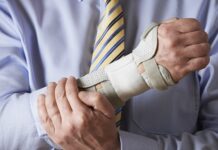In personal injury compensation claims, the role of evidence collection cannot be overstated. For clients seeking justice and compensation, the meticulous gathering and preservation of evidence play a crucial role in establishing the validity of their claims. As a Scranton personal injury lawyer, I understand firsthand how critical this process is to achieving favorable outcomes for clients. This article explores why evidence collection is vital and how it impacts personal injury litigation.
Table of Contents
The Foundation of a Strong Case
Evidence serves as the backbone of any personal injury case. It provides a factual basis for claims and helps demonstrate the extent of injuries, the cause of the incident, and the liable parties. Without solid evidence, proving negligence, liability, and damages can become exceedingly difficult.
Types of Evidence
Evidence in personal injury cases can be broadly categorized into several types:
- Physical Evidence: This includes tangible items directly related to the injury, such as damaged vehicles, medical equipment, or defective products. Physical evidence often provides a clear, objective representation of the incident and its aftermath.
- Medical Records: Comprehensive medical documentation is essential for proving the severity of injuries and the necessary treatments. This includes hospital records, treatment plans, diagnostic tests, and expert opinions.
- Witness Testimonies: Eyewitness accounts can provide critical insights into how an accident occurred. Witnesses can corroborate the injured party’s version of events and offer additional perspectives on the incident.
- Photographic Evidence: Photographs of the accident scene, injuries, and property damage can be invaluable. They offer visual proof and can help convey the impact of the injury in a compelling manner.
- Video Evidence: Surveillance footage, dashcam recordings, or video from social media can offer crucial evidence of the accident and its context. Video evidence often provides an unfiltered view of the events leading up to and following the incident.
The Role of a Lawyer in Evidence Collection
A personal injury lawyer plays a pivotal role in the evidence collection process. Here’s how they contribute:
- Strategic Planning: A lawyer will devise a strategy for gathering the necessary evidence based on the specifics of the case. This includes identifying which types of evidence are most relevant and how best to obtain them.
- Securing Evidence: Lawyers have the expertise to secure and preserve evidence properly. This involves obtaining official documents, working with forensic experts, and ensuring that physical evidence is stored correctly.
- Interviewing Witnesses: Lawyers conduct thorough interviews with witnesses to obtain detailed and accurate testimonies. They ensure that witness statements are recorded in a way that supports the case.
- Handling Legal Procedures: Collecting evidence often involves navigating legal procedures, such as filing subpoenas or requesting records. Lawyers are adept at handling these processes to ensure that evidence is obtained legally and efficiently.
- Evaluating Evidence: A lawyer will assess the evidence to determine its relevance and strength. They will use their expertise to decide which pieces of evidence will best support the client’s claims and strategy.
Challenges in Evidence Collection
Evidence collection can present several challenges, including:
- Time Constraints: Evidence can be lost or deteriorate over time. Swift action is often required to collect and preserve evidence effectively.
- Accessibility Issues: Some types of evidence, such as surveillance footage or official records, may be difficult to access or obtain.
- Legal Complications: There are legal rules and regulations governing the admissibility of evidence. Ensuring that evidence is collected in compliance with these rules is essential to avoid issues in court.
- Credibility Concerns: The quality and reliability of evidence can vary. Ensuring that evidence is credible and uncontaminated is crucial for its effectiveness in supporting a claim.
The Impact of Evidence on Case Outcomes
The quality and quantity of evidence directly influence the outcome of personal injury cases. Strong, compelling evidence can lead to favorable settlements or verdicts. Conversely, insufficient or poorly collected evidence can weaken a case and potentially lead to unfavorable results.
- Settlement Negotiations: In many personal injury cases, evidence is used to negotiate settlements. A well-documented case with solid evidence can strengthen the client’s position and lead to a more favorable settlement offer.
- Court Proceedings: During a trial, evidence is presented to support the claims and refute the opposing party’s arguments. The effectiveness of the evidence can significantly impact the judge or jury’s decision.
- Insurance Claims: Evidence also plays a crucial role in insurance claims. Insurance companies rely on evidence to assess the validity and extent of claims, and robust evidence can expedite the claims process and lead to better compensation.
Conclusion
In personal injury cases, evidence collection is not just a procedural step—it is a cornerstone of effective legal representation. From gathering physical items to securing witness testimonies and handling complex legal procedures, the role of a lawyer in evidence collection is indispensable. For those seeking expert guidance in navigating these challenges, consulting a Scranton personal injury lawyer can provide the expertise needed to build a strong case and pursue justice effectively.




